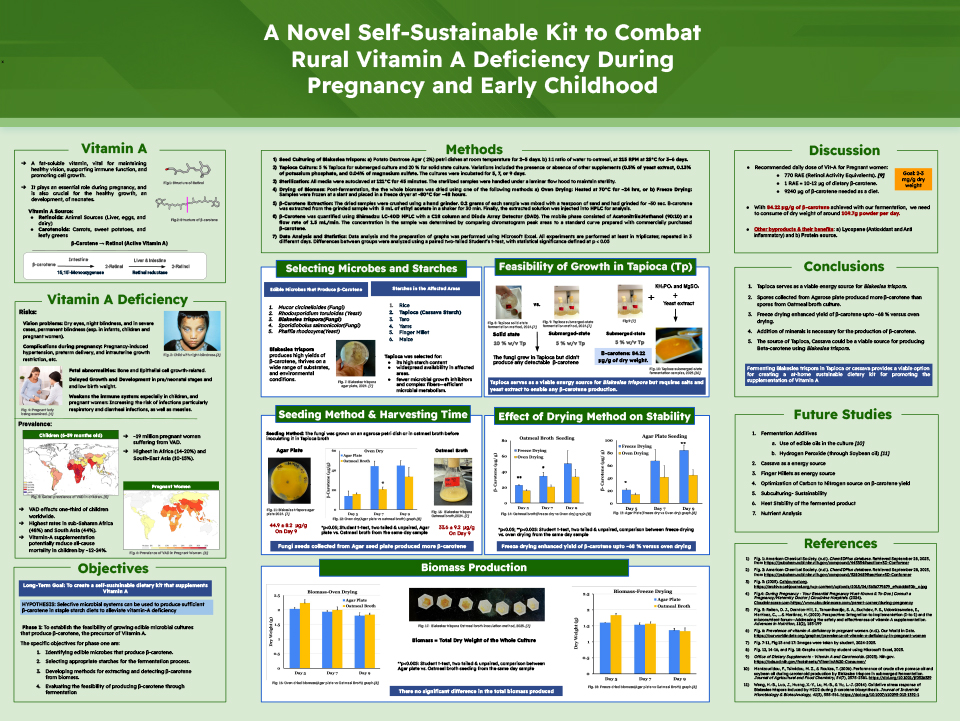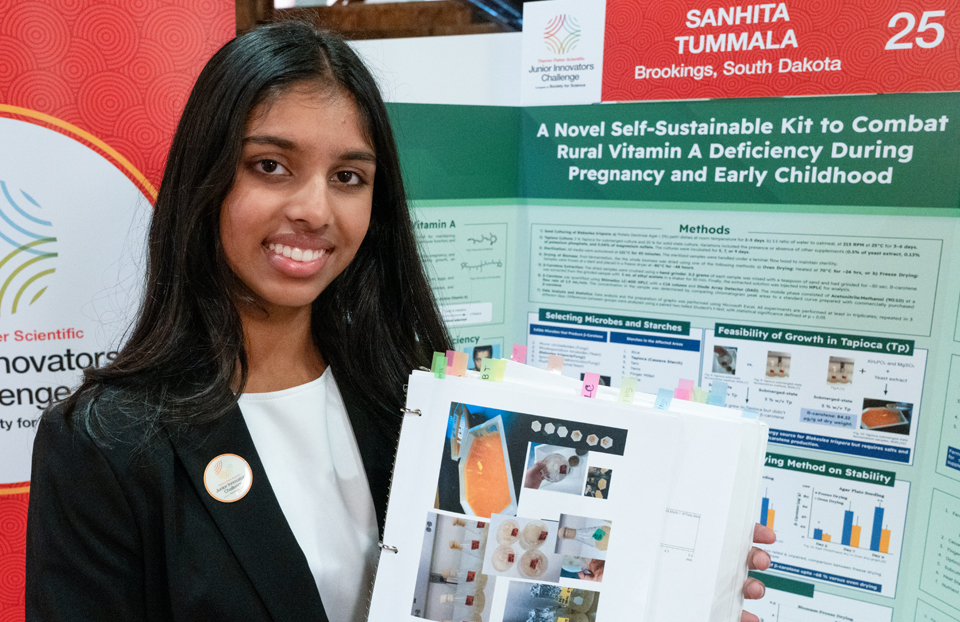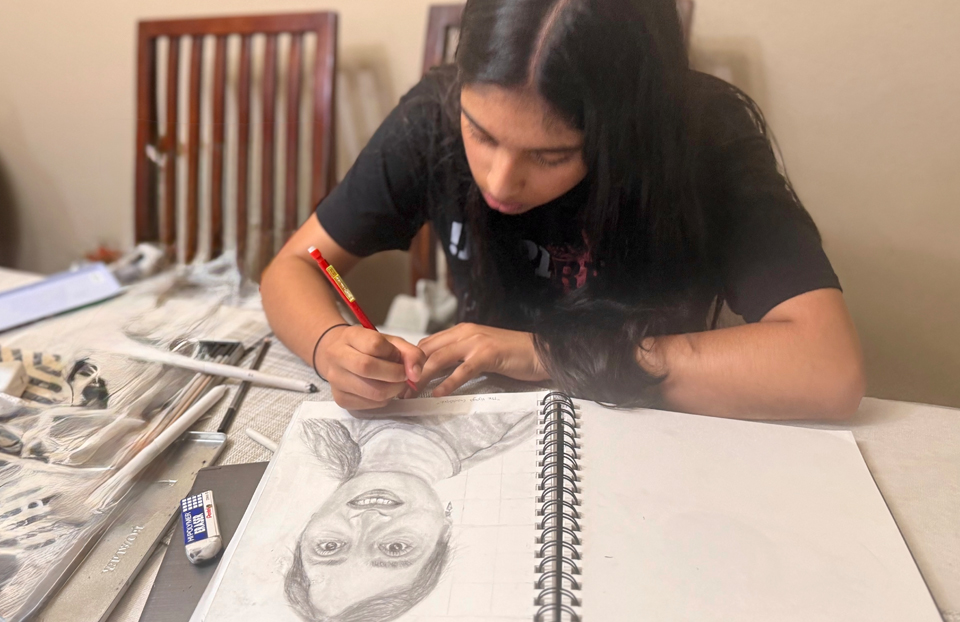Sanhita Tummala
8th Grade, George S. Mickelson Middle School
Brookings, SD
A Novel Self-Sustainable Kit To Combat Rural Vitamin A Deficiency During Pregnancy and Early Childhood
View Poster
Project Background
People who don’t get enough vitamin A can suffer from night blindness, or even total blindness. More than 19 million pregnant women and 30 million children under five don’t get enough vitamin A. Sanhita learned about this during a late-night YouTube rabbit hole. “Solutions like sending supplements are often not possible for inaccessible regions of the world, which are those most affected,” she says. Sanhita began to wonder if she could create a way for people to produce their own vitamin A at home. She decided to develop a fermentation kit to produce Vitamin A’s precursor, beta-carotene.
Tactics and Results
Sanhita selected the mold Blakeslea trispora for her kit, a microbe that is used to produce beta-carotene for things like food coloring. For a high-starch environment to grow her microbes, she chose cassava starch (tapioca), because it is very prevalent in areas where people have a vitamin A deficiency. Sanhita fermented the tapioca with the mold as a solid and a liquid for up to nine days and then tested how to freeze-dry or oven-dry her molds, measuring the beta-carotene they produced. At first, her molds didn’t produce any beta-carotene at all, and Sanhita turned to the literature, finding that she needed to add minerals to trigger it. She found that freeze-drying improved the beta-carotene yield by 68 percent compared to oven-drying. Sanhita’s methods were able to produce 84.22 micrograms/gram of dry-weight of beta-carotene, and she hopes this will be the foundation for a vitamin A-producing fermentation kit in the future.

Beyond the Project
Sanhita loves to dance and draw. “In my free time, I find myself opening my sketchbook and drawing unique artwork,” she says. While her small town doesn’t offer a lot of STEM opportunities, she says, Sanhita learned to create her own. “Science innovation doesn’t necessarily require high-tech labs—often, it’s the simplest of ideas, things maybe even a middle schooler may be able to think of, that prove to be the most effective solutions.” She would like to become a biomedical engineer.

